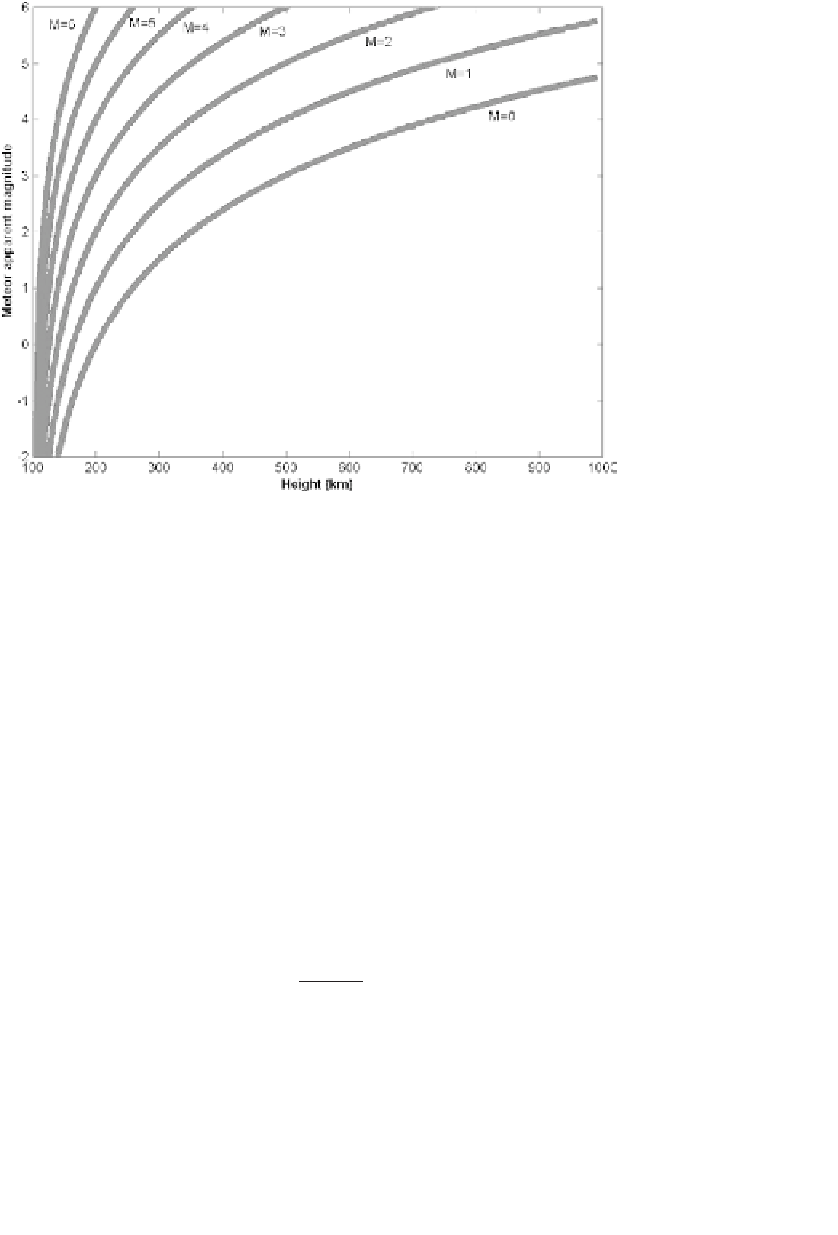Geoscience Reference
In-Depth Information
Fig. 1.
Meteor apparent magnitude versus orbit height and absolute magnitude
M
.
Fig. 1. At a height of 1,000 km only meteors having
M
= +1 are still visible.
Only in the case of bolides problems do not exist. From (2), a typical bolide
having absolute magnitude
M
=
−
12 observed from an height of 400 km
becomes a
9.6 meteor, whereas from 36,000 km its magnitude is +0.8, well
visible by a sensor designed to detect meteors having magnitude +6.0.
Due to the largest distances, from orbit a meteor trail, on average, shows
an apparent length shorter if compared with that observed from the ground.
The scenario is schematized in Fig. 2, where the meteor trail is parallel
to the radiant direction.
If
θ
is the angle between the satellite radial direction and the meteor
radiant,
l
the trail length, and
h
m
the average meteor height from the
Earth's surface, the angle
β
subtended by the trail which is at the center
of the field of view is given by:
−
l
sin
θ
q
tan
β
=
h
m
.
(3)
−
In the most common cases the angle will be
θ
=0
◦
.Takingintoaccount
an average meteor height of 100 km, a typical angle
θ
=45
◦
,atraillength









